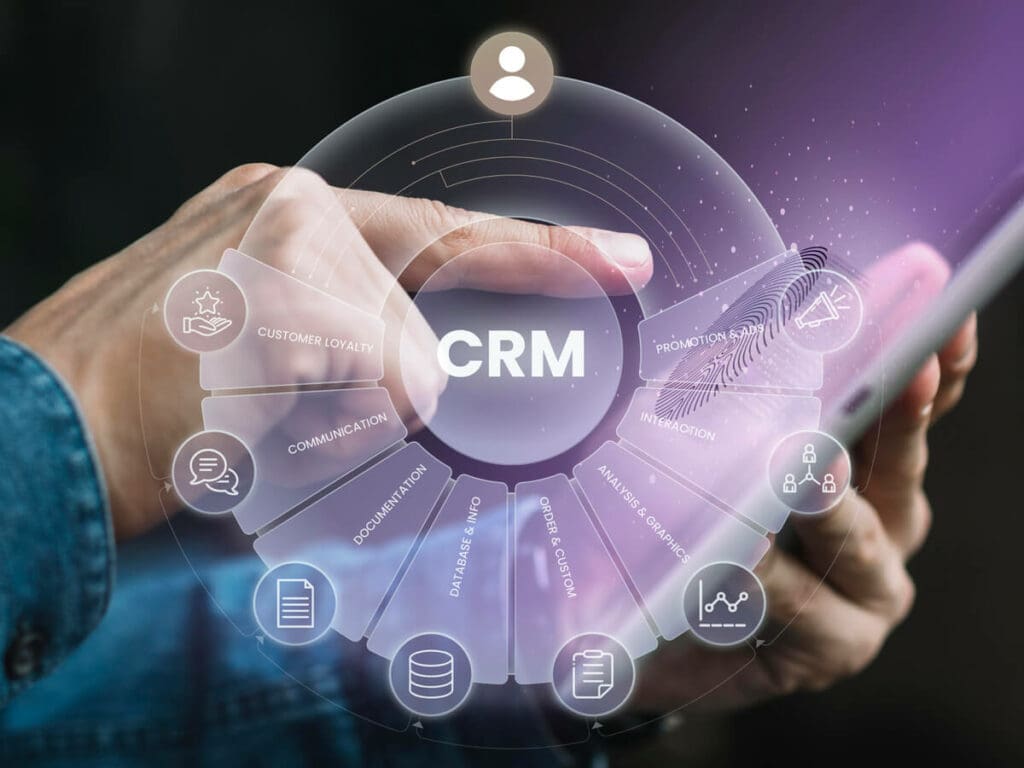B2B inbound marketing means matching a company’s marketing efforts with the customers’ buying processes. In simple words, ensure that other businesses in need of your product or service can pave their way to you without your marketing team forcing the product on them.
Many regard business-to-business marketing, in general, to be more complex and require more knowledge, expertise, and precision. The B2B processes are often free of psychological and emotional factors that usually occur in the B2C marketing segment. This means that businesses have fewer marketing tricks that can work with B2B customers.
Inbound marketing for the B2B is an answer to numerous businesses seeking to find an appropriate strategy for promoting their products and services without wasting money on ineffective and interruptive outbound techniques.
The guide below describes the main principles of inbound marketing in the B2B industry, strategies, tools, and tactics, and provides valuable insights for marketers and business owners.
What is B2B inbound marketing?
Business-to-business inbound marketing is a strategy where a business uses inbound marketing tactics to attract customers from other businesses. These inbound marketing tactics are directed towards building mutually beneficial relationships. B2B inbound marketing aims at creating more intimate connections with customers while having a deep understanding of client’s business needs and goals.
Compared to other marketing segments, B2B sales cycles are much longer and more complicated, which is a nightmare for a lot of traditional marketers. Longer sales cycles mean a more complex buyers’ journey and decision-making process which requires more intense marketing efforts. Inbound marketing tries to make this cycle more tolerable through continuous communication, a strong foundation of trust, and highly relevant marketing campaigns.
The inbound marketing for B2B uses three main tool categories for the marketing efforts:
- Tools to attract
- Advertising
- Social media marketing
- Content marketing
- Tools to engage
- Lead management
- Email marketing
- CRM
- Tools to delight
- Smart content
- Surveys
- Marketing automation
Inbound marketing tools to attract B2B clients
The first stage in a B2B inbound marketing strategy is to attract prospective clients. The most common approach is to build a robust online presence and draw attention from businesses that seek specific services or products. The tools vary according to complexity, budget, time efficiency, and human resources. But we can categorize them into three main pillars: B2B advertising, social media management, and content marketing tools.
B2B advertising
B2B advertising for inbound marketing campaigns means creating targeted campaigns across various channels to capture the attention of businesses in need. In contrast to its counterpart B2C, B2B advertising needs a nuanced approach. It must focus on rational aspects of decision-making rather than emotional triggers.
Advertising efforts for B2B clientele usually occur through platforms like LinkedIn, industry-specific publications, and search engine marketing. The most important task for advertisers is to define correct value proposition and reach the right audience. The ad copies must also reflect the challenges and goals of targeted clients.
As B2B sales cycles are usually longer, advertising campaigns need to use a mix of both awareness-building and lead-nurturing strategies. For example, remarketing campaigns can be useful to gently guide customers throughout the buyer journey.
SMM for B2B
Many marketers believe that social media is predominantly a B2C arena – which is a common misconception. It has been a valuable tool for B2B companies that look for meaningful partnerships. Social media platforms serve as dynamic tools for connecting, engaging, and attracting potential clients.
LinkedIn, for instance, is the most popular professional ecosystem within the market. It is center stage in B2B social media marketing. This virtual hub allows businesses to share leadership content and establish industry authority. However, it does not mean that companies should ignore Twitter, Facebook, and other platforms. Improving brand visibility and community building are integral parts of social media marketing.
The most noticeable difference between B2B and B2C social media marketing is content. The quality of the content, the value it carries, and the language it uses decide the fate of any SMM campaign. B2B content in social media ranges from articles and whitepapers to case studies and webinars. The purpose of insightful content is not only to reach potential buyers but also to position the business as a valuable resource within the industry.
B2B content marketing
B2B inbound marketing heavily relies on content marketing as a strategic approach to attract clients with precision and purpose. It essentially means creating valuable, data-driven content to inform and inspire businesses. B2B content marketing is built upon Search Engine Optimization principles with more focus on ensuring that the output resonates with potential clients.
Strategic content creation
Strategic content marketing involves creating content that does a few important things:
- addresses the pain points of businesses
- aligns seamlessly with the keywords relevant to the industry
- answers all questions that potential clients may have during their decision-making process
- provides data-driven insights and valuable information that is hard to find elsewhere
Optimizing for search engines
High-quality content alone does not guarantee that it will reach and attract potential clients. Optimizing the content for search engines is crucial as it will ensure the content is accessible and visible online. SEO-optimized content brings in organic traffic that has a much higher conversion rate than the audience brought in by advertising campaigns. These are the few steps B2B enterprises usually invest in when creating an SEO-optimized B2B content marketing strategy:
- Exploring the latest SEO trends
- Finding relevant keywords
- Doing strategic link-building
- Enhancing user experience
- Improving content quality and readability
Inbound marketing tools to engage B2B clients
Engagement is the second stage of B2B inbound marketing strategy and requires a very careful and precise approach. At this stage, prospective clients transform into valued customers who need to be nurtured and maintained. The engagement phase requires a thorough understanding of client needs and the knowledge of how to guide them through the complex sales cycle. The three main ways inbound marketers achieve these are through lead management, email marketing, and customer relationship management.
Lead management
Lead management in the B2B segment functions as a bridge between prospect interactions and conversions. It requires a systematic process of identifying, categorizing, and nurturing potential clients throughout their journey. The various lead management tools make it easier to analyze complex data and gain insights into the needs, preferences, and pain points of the customers.
The most complicated part of lead management is understanding where exactly each lead stands in the buying cycle. Each phase of the cycle corresponds to a very specific communication and targeted content. For example, a business that has already found a few options to choose from and a business that is just beginning the research require different marketing approaches, content, and communication styles.
Email Marketing
The study by Experian shows that the average return on investment of $1 on email marketing is $44.25, highlighting the power of a successful email marketing campaign. However, unlike its B2C counterpart, B2B email marketing involves creating highly targeted and informative content that furthermore will cater to the specific needs and challenges faced by businesses.
Email marketing in the B2B segment is not a mere promotional message. The campaigns serve as a direct line of communication where personalization is the key – tailoring content to the industry, role, and interest of the recipient. Drip campaigns, segmented lists, and triggered emails based on user behavior allow businesses to deliver the right message at the right time.
CRM
B2B Customer Relationship Management tools empower businesses to centralize, analyze, and leverage customer data. It eventually enhances engagement, helps companies understand their client’s needs, and allows them to tailor experiences for every client.
CRM is not a simple contact management – it is a complex system that captures and organizes every touchpoint within the customer journey. Targeted engagement strategies are usually achieved by collecting data on:
- Client preferences
- User purchase history
- Communication interactions
Moreover, CRM systems require active collaboration between the departments – sales, marketing, and customer service teams must work together to deliver a coherent and personalized experience at every stage of the buyer’s journey.


Inbound marketing tools to delight B2B clients
In the B2B industry, the journey does not end with client acquisition. Businesses must aim at not only meeting but exceeding client expectations. This is where the delight stage comes into action with various tools available for B2B inbound marketing specialists. The most common tools include smart content, B2B surveys, and marketing automation.
Smart content
Smart content is a powerful inbound marketing tool for B2B. It adapts to individual client preferences, behaviors, and engagement history resulting in a personalized experience for every client. Smart content tailors not only the message but also the format and presentation. However, it is very important to correctly anticipate client expectations and resonate with their unique needs.
There are many different B2B ecommerce platforms where smart content comes in handy such as personalized website experiences, targeted emails, or adaptive marketing materials. No matter which platform the content is displayed the main goal is to have action-oriented content.
Nowadays, more and more users want to be empowered by businesses through self-service. They want to achieve their goals and complete a user journey seamlessly. That is why smart content needs to be combined with a comprehensive customer journey mapping. Smart content allows users to take action on their terms increasing client satisfaction drastically.
B2B surveys
Understanding and actively responding to the client’s needs and preferences is one of the primary goals of a B2B inbound marketing strategy. It is a direct line of communication that collects valuable insights which later can be used for fostering customer relationship management and increasing client satisfaction. There are three main goals of B2B surveys at a user delight stage:
- To measure client satisfaction
- To identify pain points
- To gauge the effectiveness of the business’ offerings
Apart from actively seeking client feedback the enterprise demonstrates a commitment to continuous improvement and a genuine interest in meeting and exceeding customer expectations. This eventually reflects well on the trustworthiness of a company.
Marketing automation
Marketing automation is a data-driven approach that combines multiple crucial functionalities that otherwise would require immense time and human resources to perform. It is responsible for streamlining workflows, delivering timely communications, and creating a seamless journey for customers. There are numerous benefits to marketing automation strategy but we can classify them into three main categories:
- Cost – marketing automation tools do require investment, however, they are far less compared to manual processing in the long run
- Efficiency – any successful B2B organization relies on data and the amount of data for such companies can be overwhelming for a person to analyze. Automated processes allow large chunks of data to be processed within a few minutes as opposed to a few weeks when performed by manpower.
- Accuracy – it is not a secret that automated solutions are often more accurate than humans. Using marketing automation tools for data processing allows businesses to be confident in their data-driven insights and forget about worrying over lost/forgotten or misplaced information.





















Leave a Reply
View Comments